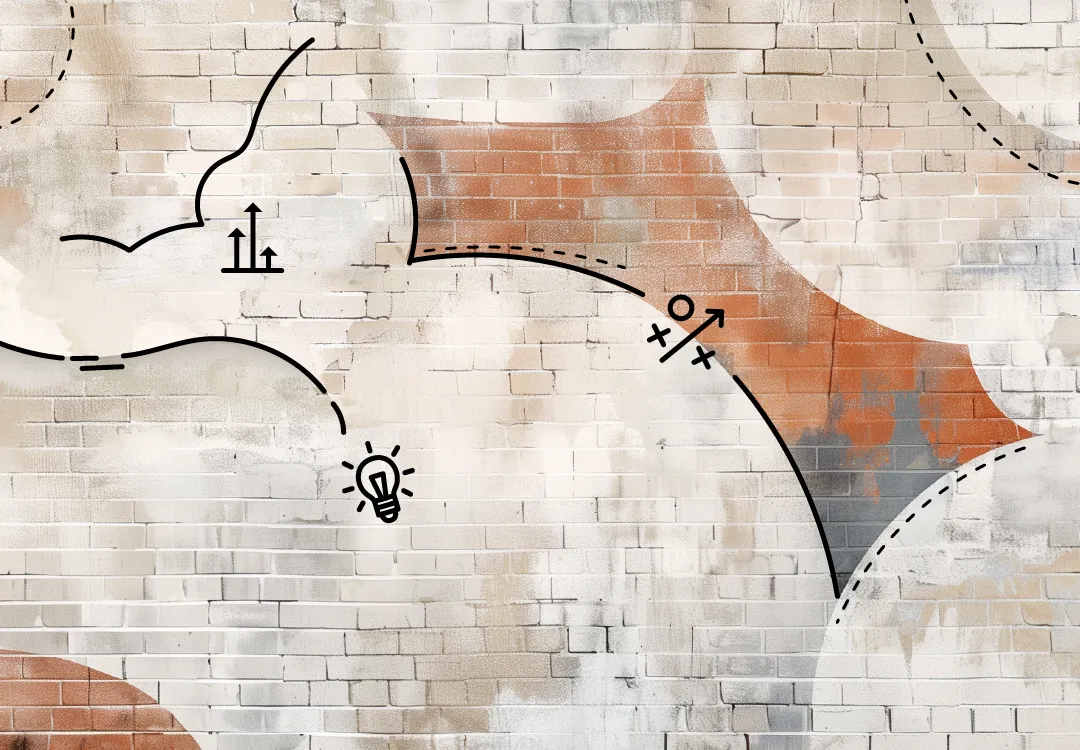Article
Workforce transformation in an AI-powered back office
Three actions to get your workforce ready

Table of contents
Related services and insights
Back office optimizationWorkforce developmentAI and automation are transforming the traditional back office from a strategic drag into a growth driver. The potential upside is significant. In the right hands, AI transformation can streamline operations, cut costs, and improve quality. But as with any powerful tool, it’s only as effective as the person steering it.
Getting humans into the driver’s seat: The case for intentional AI and workforce transformation in the back office
Back office leaders have a powerful opportunity to shape the future of the AI-powered back office by rethinking processes, reimagining roles, and proactively preparing their people for AI-driven workforce transformation. The challenge is to avoid the distraction of dystopian visions of a humanless back office that are trending in the media. Sensationalistic headlines play on people’s understandable worries about bias, trust gaps, and job losses associated with AI. Such headlines also influence leaders to overfocus on the technology without addressing the workforce’s immediate needs.

AI and automation in the back office is shifting how tasks are performed, the skills required, and the roles that will drive value going forward.
The scale and pace of AI transformation makes the idea of a fully automated back office more plausible than ever. As the traditional back office disappears, some roles will be lost, and others will be repurposed or integrated into the front office. We expect FTE requirements in the back office of the future to be lower than they are today as back office workforce optimizations take shape. The irony? In the immediate term, more people, not less, will likely be needed to build a future-ready, AI-powered back office.
The fully humanless back office is still years away. For some organizations, it will never be an option given the nature of their business and culture. This is why aligning to this amorphous future now can undermine corporate strategies, trigger employee disengagement, and create reputational risk.
Instead, organizations should focus now on a back office with humans and AI. Think of AI like a car with a powerful engine. This car goes fast. It takes people where they want to go. But humans do the steering, apply the brakes, and set the rules of the road to safely reach the destination. That’s why it’s essential to prepare humans to take the wheel with confidence. This takes a thoughtful, deliberate, and decidedly human rollout of AI-driven workforce transformation. One that’s grounded in reskilling, adaptive leadership, and a strong culture. All so the business goes in the right direction.
Start preparing your workforce to drive AI transformation today
Standout organizations will pursue this intentional AI transition now, facing this revolutionary workforce transformation head-on with three actions that support employees—and drive business success.
Action 1: Define the human skills that matter the most
If AI adoption is left unchecked—without an intentional focus on the workforce impact—back office professionals risk becoming passive spectators in their own jobs. They could end up as passengers, not drivers, as their instincts dull and skills atrophy. Without the expertise of a skilled human driver, the system could keep going straight when the road actually turns.
Technology change is always reshaping back office skills. Fifty years ago, time reporting required a department of humans to keypunch manual time reports. Today, time reporting is largely digitized, and humans handle the exceptions. In the future, AI transformation will take over the exceptions, eliminating the need for these skills altogether.
Leaving human expertise untapped is bad for employees and for business. So, organizations should define the human-centered “driver” roles and skills that matter most in an AI-powered environment. There will be increasing demand for skills like analytical thinking, data fluency, ethical oversight, process optimization, and cross-functional collaboration. Uniquely human abilities—like contextual judgment, quality control, standard-setting, and strategic decision-making—will also be essential.
Leaders should identify these skills within the context of the disappearing back office and close gaps that exist. Take training AI models, for example. As AI agents become more embedded, back office functional teams will need to train and retrain AI models using organizational data, which is no small lift. Today, few have experience in curating datasets, fine-tuning outputs, or maintaining model performance. It’s the difference between using a dashboard without understanding the logic and driving the logic in the AI that runs the dashboard.
Action 2: Ready leaders to manage humans and AI
Traditional supervisory skills will become obsolete in a workforce of both humans and AI agents. Managers will be expected to do more than delegate tasks to employees. They must simultaneously be effective leaders and technologists while having the understanding to oversee multiple back office functions.
In the AI-enabled back office, the best leaders are AI “experts” in their own right. It’s not that they are programmers or coders. Rather, they have AI fluency to know when to trust the system and when to question its direction and take a turn. This means getting comfortable overseeing algorithmic decisions, auditing model outputs, and calibrating system behavior. Organizations that lack leaders with AI fluency risk over-trusting automation—or worse, failing to notice when it goes wrong.
Preparing leaders now to drive in these ways is especially important given what’s happening to the leadership pipeline in the back office and the future of back office workforce management. Junior roles in HR, Finance, or Operations have historically been critical entry points for learning the business, building judgment, and developing leaders. With less roles like this in an AI-enabled environment, organizations will need new ways to build institutional knowledge and strengthen leadership benches.
Action 3: Ground the workforce in a strong culture
The disappearing back office introduces a cultural paradox: the more efficient that ways of working become, the more disengaged the workforce may feel. Employees increasingly interact with algorithms, not teammates. They’re called in only when things go wrong. This can lead to AI fatigue, isolation, and loss of agency. Rather than shaping outcomes, humans feel trapped in the back seat.
This isn’t the first time culture has lagged behind technology. When organizations first rolled out large ERP systems, employees often resisted because the tools felt rigid and impersonal. More recently, remote work technology outpaced workplace culture. Zoom and Teams could connect people instantly, but companies had to catch up by rethinking norms, expectations, and even trust.
AI transformation presents the same challenge. The technology may automate the road, but people still decide the destination. Culture is what ensures employees feel empowered to steer, not sidelined as passengers. This is why it is so critical for organizations to get out in front of employees’ fear by demystifying AI transformation and its impact on work. This means naming the changes, prioritizing authenticity, designing the cultural shift, and creating a narrative of reinvention, not obsolescence.
Leaders should emphasize that transformation happens in cycles. This transformation, like the others before it, will create new work and opportunities. But none of this happens passively. If companies don’t intentionally guide the transition, the cultural fallout will outweigh the technical gains. The challenge is not the presence of AI. It’s the absence of a strategy and cultural grounding to help people transition into new roles with clarity, purpose, and agency.
Reaching the right destination
No matter how AI evolves—or the extent to which a fully automated back office becomes a reality—organizations have strategic choices to make around the balance of humans and AI in the short term. There is no one right answer. Every organization is different, and humans and AI contribute very differently to driving back office optimization. AI eliminates drag, manual handoffs, status chasing, and time lags while bringing forward-looking insight to the back office that improves front-office performance. Humans bring the judgment, empathy, and contextual business understanding that AI simply can’t replicate.

The future of the back office isn’t purely about technology. It’s about the workforce, too.
Change is already here, but organizations have choices. They can treat AI as a black box, or they can take the driver’s seat by intentionally approaching AI and workforce transformation, ensuring technology serves strategy and people in the disappearing back office.

